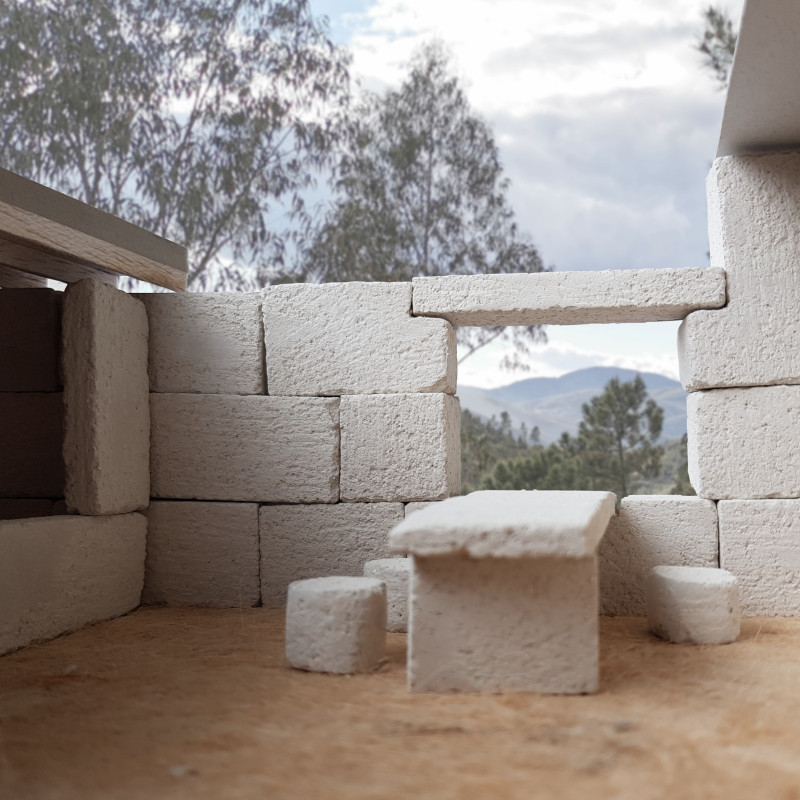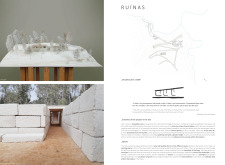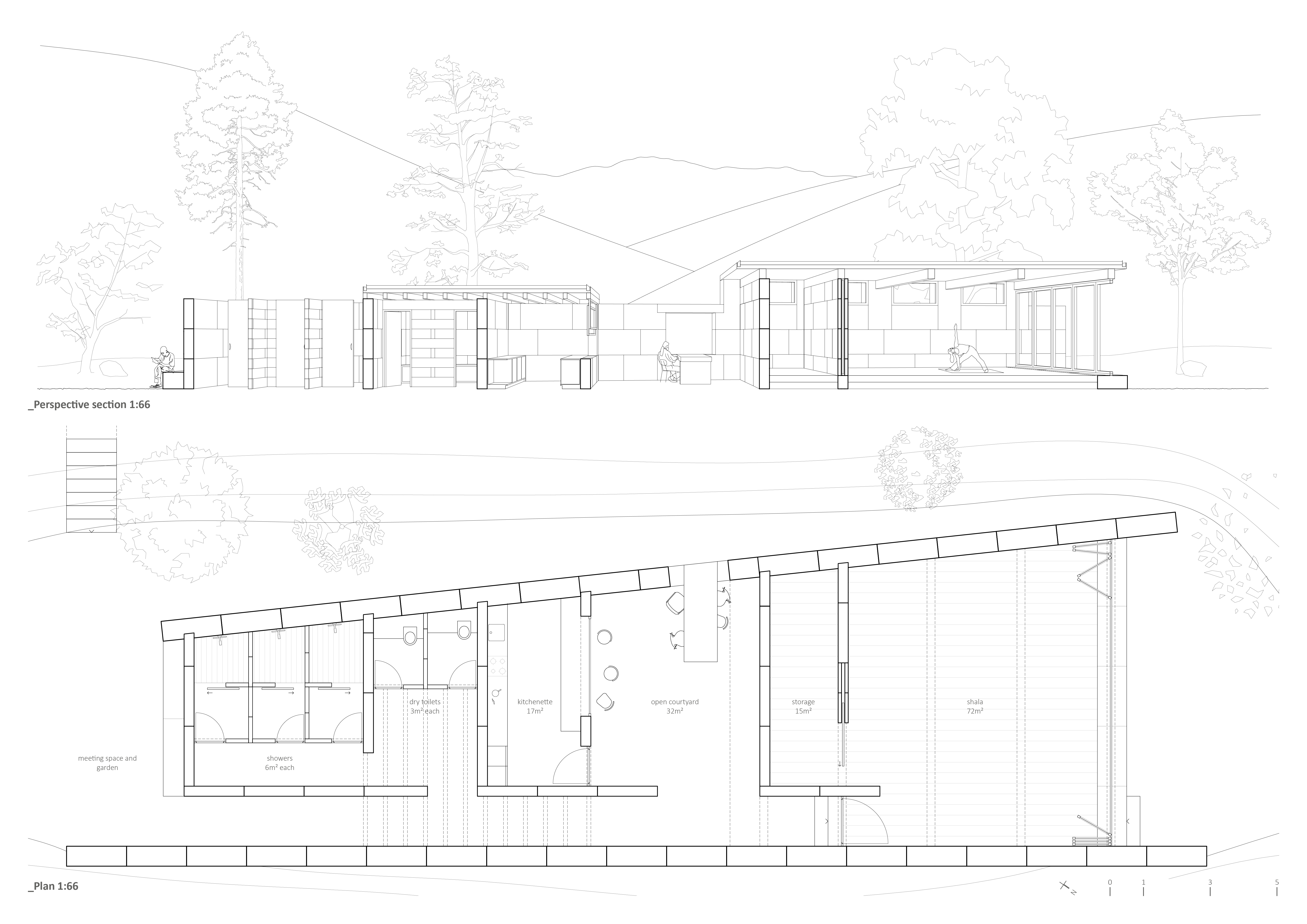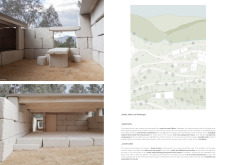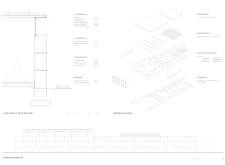5 key facts about this project
Ruínas is an architectural design situated in a landscape defined by its natural slopes and lush vegetation. The project serves as a space for reflection and community gathering, thoughtfully integrating with the surroundings. The design approach emphasizes the relationship between the building and its site, viewing the environment as an important contributor to the overall experience.
Design Concept
The layout of Ruínas reflects a sensitive response to the terrain, where walls are embedded within the slope and roofs follow the natural contours. This design creates an immediate connection with the landscape. Users are guided through a sequence of spaces that balance private reflection with communal interaction, enhancing their relationship with the natural world.
Spatial Arrangement
At the heart of Ruínas is the shala, a meditation room strategically placed to deepen the connection between visitors and the nearby forest. This placement encourages individuals to step away from everyday distractions and find peace. Additionally, the project includes spaces for yoga, a communal area for gatherings, and facilities for purification like an open shower and a dry toilet. Each of these areas has a specific function, contributing to an overall atmosphere that promotes contemplation and connection.
Materiality and Construction
Massive stone from local quarries forms the main material for the project. This choice stresses the natural beauty of the stones and their imperfections. In this approach, unsold materials are valued, promoting sustainability. The design avoids traditional wet construction methods. Instead, dry construction allows for an efficient build process. The stones are shaped into retaining walls, cross walls, and partition walls, showing care for environmental impact while respecting the local landscape.
Design Detail
Light plays an important role in the experience of Ruínas. Within the shala, openings in the architecture let in soft, natural light that enhances the space's calmness. This light creates an inviting atmosphere for meditation and reflection. The careful arrangement of elements reminds users of the bond between the built environment and nature, encouraging them to engage deeply with both.


